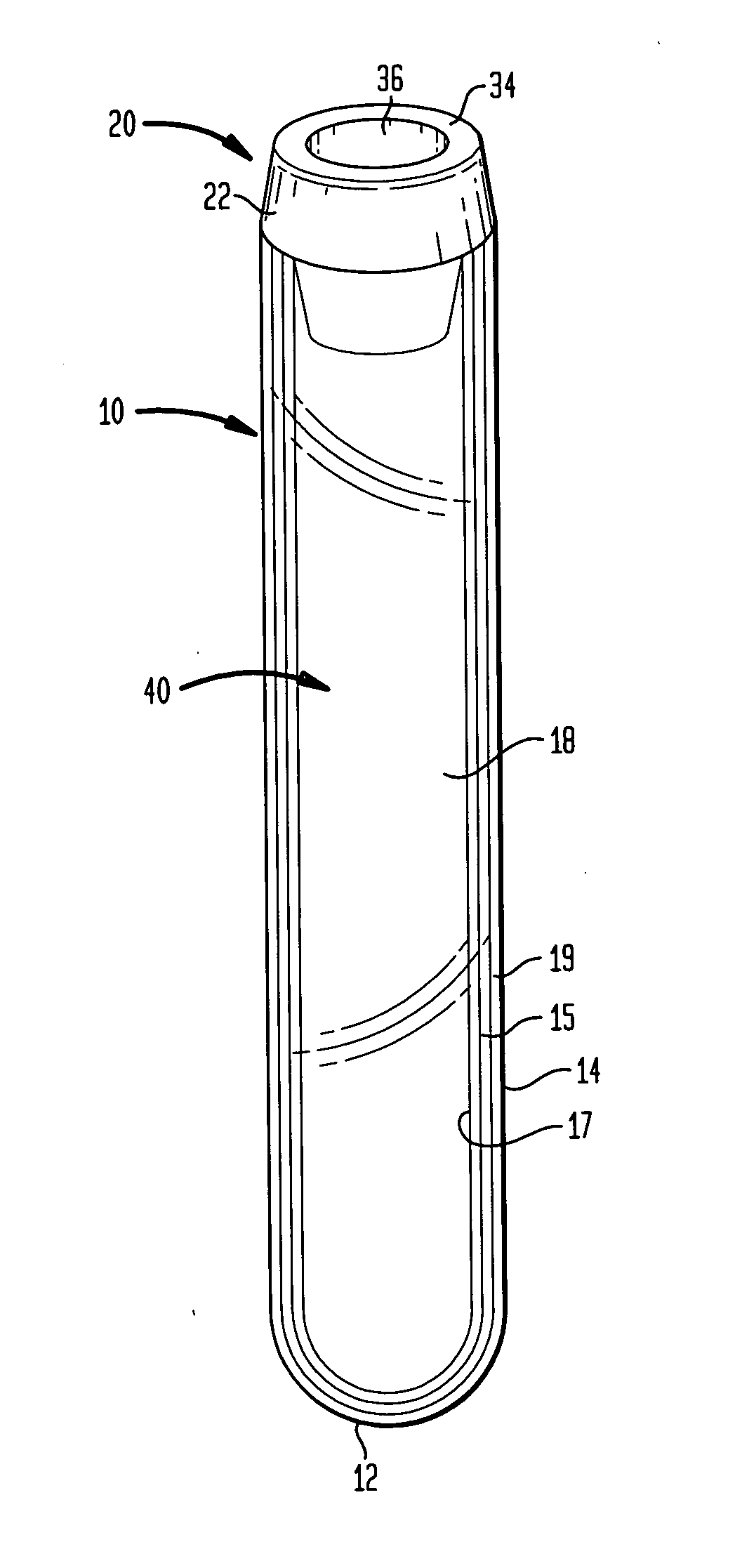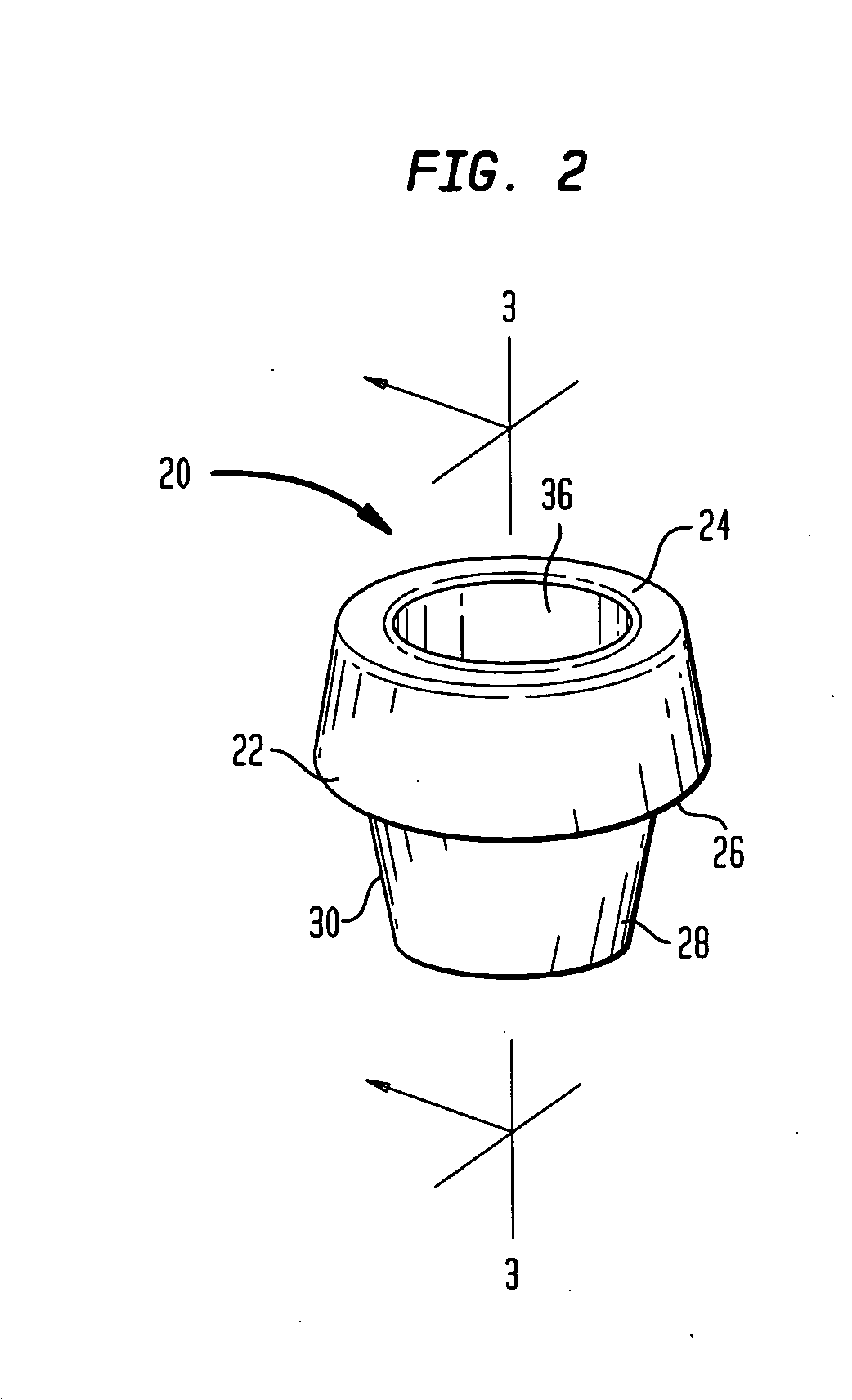Collection container assembly with nanocomposite barrier coating
a technology of nanocomposite barrier coating and collection container, which is applied in the field of plastic collection container assembly, can solve the problems of affecting the intended use of the tube, affecting the shelf life of the evacuated plastic tube, and affecting the recycling process,
- Summary
- Abstract
- Description
- Claims
- Application Information
AI Technical Summary
Benefits of technology
Problems solved by technology
Method used
Image
Examples
example 1a
Barrier Coating Example 1A
5% Solids Polyester Nanocomposite Using SCPX-2973 Montmorillonite Slurry
[0129]In an 8 oz jar, 0.02 grams of Acusol® 880 (35.2%, Rohm & Haas), 0.05 grams of Acusol® 882 (17.1%, Rohm & Haas) and 41.54 grams of distilled water were weighed. A stir bar was added and the solution was stirred until the Acusol® materials were dissolved. To this solution was added a mixture of 5.65 grams of polyester latex (Eastek 1000, Eastman) and 1 drop of Surfynol® PSA 336 (Air Products, 100%). The resulting solution was mixed thoroughly.
[0130]To the above solution, 14.25 grams of montmorillonite SCPX-2973 slurry (9.21% silicate filler) was mixed with 3.49 grams of glycine (Lab Safety Supply, 20% glycine by weight) and 10 grams of distilled water. The resulting solution was stirred with a stir bar for 1 hour and 1 drop of Mergal® 680 (Troy Chemical Corporation, 26.3% by weight anti-microbial) was added. The percent solids of the formulation were measured as 5.0%, using standard...
example 1b
Barrier Coating Example 1B
8% Solids Polyester Nanocomposite Using SCPX-2973 Montmorillonite Slurry
[0133]In an 8 oz jar, 0.04 grams of Acusol® 880 (35.2%, Rohm & Haas), 0.08 grams of Acusol®D 882 (17.1%, Rohm & Haas) and 37.4 grams of distilled water were weighed. A stir bar was added and the solution was stirred until the Acusol® materials were dissolved. To this solution was added a mixture of 9.0 grams of polyester latex (Eastek 1000, Eastman) and 1 drop of Surfynol® PSA 336 (Air Products, 100%). The resulting solution was mixed thoroughly.
[0134]To the above solution, 22.8 grams of montmorrillonite SCPX-2973 slurry (9.21%) was mixed with 5.59 grams of glycine (Lab Safety Supply, 20%). The resulting solution was stirred with a stir bar for 1 hour and 1 drop of Mergal® 680 (Troy Chemical Corporation, 26.3%) was added. The percent solids of the formulation were measured as 8.1% using standard techniques.
[0135]After this coating solution is applied to a polyester film substrate and al...
example 1c
Barrier Coating Example 1C
8% Solids Polyester Nanocomposite Using SCPX-2973 Montmorillonite Slurry Concentrated from Example 1A
[0137]50 grams of the nanocomposite from example 1A was placed in an 8 oz. jar. The jar with the lid removed was then placed into a water bath at 95° C. for 90 min while stirring. The internal temperature of the formulation was maintained at 75° C. After the allotted time, the formulation was removed from the water bath and stirred overnight with the lid replaced. The percent solids of the concentrated formulation were measured as 8.3% using standard techniques.
[0138]After this coating solution is applied to a polyester film substrate and allowed to dry, the coating contains 45.4% by weight polyester, 35.1% by weight filler, 18.7% glycine, 0.3% Surfynol® PSA 336 wetting agent, 0.2% by weight Acusol® 880, 0.2% by weight Acusol® 882 and 0.05% by weight Mergal® 680 anti-microbial agent.
[0139]The oxygen transmission rate (OTR) is measured using a MOCON® OX-TRAN ...
PUM
 Login to View More
Login to View More Abstract
Description
Claims
Application Information
 Login to View More
Login to View More - R&D
- Intellectual Property
- Life Sciences
- Materials
- Tech Scout
- Unparalleled Data Quality
- Higher Quality Content
- 60% Fewer Hallucinations
Browse by: Latest US Patents, China's latest patents, Technical Efficacy Thesaurus, Application Domain, Technology Topic, Popular Technical Reports.
© 2025 PatSnap. All rights reserved.Legal|Privacy policy|Modern Slavery Act Transparency Statement|Sitemap|About US| Contact US: help@patsnap.com



